Gloves for product protection
A carefully chosen selection of materials to avoid damaging the finished product during handling, while providing operators with a high level of dexterity.
Protection of products during handling
In the last few years the quality standards for industrial products has risen considerably, and with the advent of models such as Total Quality Management, leading manufacturers have started pursuing “zero defect” objectives. Through studying workstations in a wide range of industries, we have worked alongside our customers in their mission to reduce the level of defects by introducing gloves and product protection equipment.
This type of glove allows operators to have a high level of dexterity when handling parts or pieces, preventing damage to the product and any subsequent reworking.
When developing gloves for protecting the product, the most appropriate material must be chosen for the application in question. Microfibre or gauzed synthetic fabric, for example, are excellent for preventing fingerprints or leaving accidental lines on the chrome or lighting parts of vehicles. A material with low residue release (low-linting) should be used during the painting stage in order to prevent dirt or lint residues from being deposited on the product.
With the advent of models such as Total Quality Management, leading manufacturers have begun pursuing “zero defect” objectives.
Protecting electronic components
from static electricity
Static electricity is the localised accumulation of electric charge on the surface of a body made of insulating material. Accumulations of static electricity can be created by friction, and, when that charge remains localised, it can generate an electric field and the familiar “shock” effect.
Accumulation of electricity has the potential to damage electronic components, which are now common in many industries. All operators who assemble or produce sensitive electronic components must wear conductive gloves, clothing and shoes (containing carbon, copper etc.) in order to disperse the electrostatic charge.
For gloves, the EN 16350 standard applies to gloves with electrostatic properties. Gloves certified to this standard can also be used effectively in ESD protected areas (EPAs) as gloves that protect the product.
